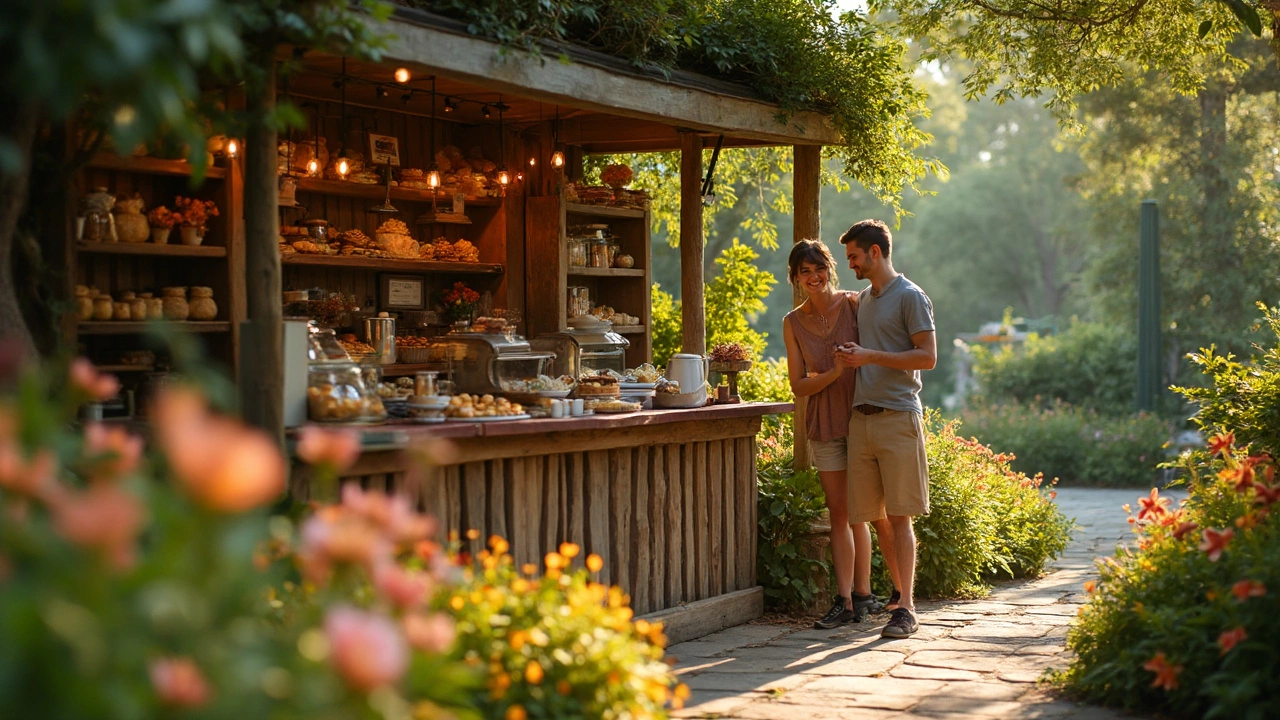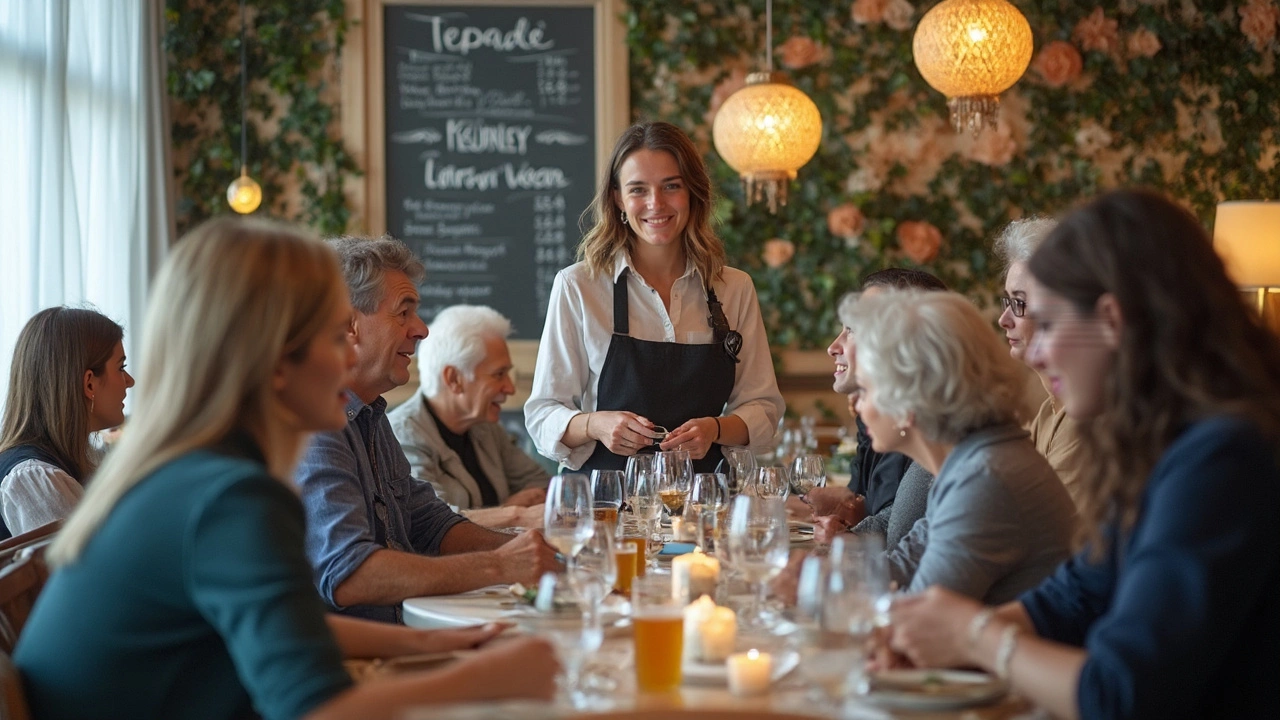Some people hear “all-inclusive” and picture endless food with no rules. The reality can be a bit different, but still pretty sweet if you know what you’re looking for. Usually, all-inclusive hotels guarantee three main meals: breakfast, lunch, and dinner. These are served in big main restaurants, buffet-style or sometimes as sit-down meals.
But here’s a twist—lots of places also throw in snacks between meals, late-night bites, and drinks (both alcoholic and not). What you get can depend on the hotel’s vibe and price tier. So, before you show up with stretchy pants, get clear on what your package actually promises. You don’t want to be surprised when the pizza bar closes at 3 pm or the best tacos need a reservation.
- What Does 'All-Inclusive' Really Mean at Mealtimes?
- Typical Meal Structure and Times
- Snacks, Drinks, and 24/7 Options
- Making the Most of Your Dining Options
- Common Surprises and Pro Tips
What Does 'All-Inclusive' Really Mean at Mealtimes?
People throw around the phrase "all-inclusive" like it’s a golden ticket to unlimited food and drinks. But hotels have their own playbook when it comes to how these meals work. At most all-inclusive hotels, you’ll get breakfast, lunch, and dinner each day, already included in the price of your stay. This usually happens in the main buffet restaurant, but fancier spots often have a mix of buffets and à la carte restaurants (that’s just a fancy way of saying you order from a menu and get your food served like a regular restaurant).
There’s more to it, though. Besides the three core meals, most places also have snack bars, coffee corners, or food carts running during the day. Some will let you grab pizza by the pool or nachos in the late afternoon. Drinks—yes, even the fun cocktails—are part of the deal too, but sometimes they draw the line at top-shelf liquor or imported drinks. And those mini-fridges in your room? Sometimes restocked for free, sometimes not—always check before raiding the whole thing.
Different hotels lay this out in their own way. Here’s what you might run into:
- Buffet restaurants: Main spot for most meals. Open for set hours at breakfast, lunch, and dinner.
- À la carte dining: Usually needs a reservation. Some hotels offer a set number of à la carte dinners per week.
- Snack shacks or poolside grills: Serve food during the "off hours" between main meals.
- Room service: May be included, but sometimes there’s a fee or limited menu.
It’s a good move to ask for a dining schedule or check the hotel’s app when you arrive. That way, you know exactly how the whole food set-up works, when things are open, and what counts as part of your meal perks.
Typical Meal Structure and Times
So, what does a day of eating look like at a all-inclusive hotel? Most places stick to a three-meal routine, but the actual hours and setup can be a little different depending on where you’re staying.
Here’s the usual line-up:
- Breakfast: Breakfast usually kicks off between 7:00 and 10:00 am. You’ll find breakfast buffets with eggs, fruit, pastries, and maybe made-to-order items like pancakes or omelets. In the Caribbean or Mexico, expect extra options like fresh tropical fruit and local dishes.
- Lunch: Lunch gets going around noon and can run until 2:30 or even 3:00 pm. Buffets again rule the scene, but some all-inclusive resorts have grills or snack bars by the pool. Think burgers, pizza, salads, pasta—easy stuff you can grab in your swimsuit.
- Dinner: Dinner is usually a bigger deal. Buffet restaurants are open from about 6:00 to 9:30 pm, but many hotels have specialty or à la carte restaurants. If you want to try sushi, steak, or top-tier Italian, you might need to book your spot a day or two in advance.
The basic times look like this:
| Meal | Typical Time Range |
|---|---|
| Breakfast | 7:00 – 10:00 am |
| Lunch | 12:00 – 3:00 pm |
| Dinner | 6:00 – 9:30 pm |
If you come from a country where mealtimes are much earlier or later, double-check these times when you check in. Some resorts cater to families by opening breakfast earlier. Others stretch dinner into the night when guests are more relaxed or on "vacation time."
Don’t forget, some resorts shuffle in special theme nights—maybe Italian one night, Mexican another—so it’s worth checking the weekly dining schedule if you want to catch your favorites.
And hey, if you sleep through breakfast (it happens), ask staff about late breakfast or brunch options. Many all-inclusive hotels keep a smaller selection running past the main breakfast rush just for folks who love to sleep in while on vacation.

Snacks, Drinks, and 24/7 Options
If you’re worried about getting hungry between main meals, most all-inclusive hotels have you covered with snacks. Think along the lines of pizza slices, nachos, fresh fruit, mini sandwiches, fries, or even ice cream. These snacks are usually available at designated snack bars or poolside grills. Each place does it a bit differently, so check out the hotel map or app as soon as you arrive—it’s easy to miss some hidden gems.
Now, let’s talk about drinks. In almost every all-inclusive spot, you’ll get unlimited soft drinks, juices, coffee, and tea all day. Cocktails, beer, and wine are usually part of the deal, too. Some higher-end resorts offer branded liquors or fancier drinks, but budget spots might stick to local choices. If you’re a fan of morning mimosas or late-night margaritas, check if your package includes them—sometimes premium drinks cost extra.
What about those weird eating hours or midnight munchies? Many resorts offer some 24/7 dining option. This could be a little café with pastries and sandwiches, room service included in your rate, or a self-serve snack station. You probably won’t get a full three-course meal at 2 a.m., but you won’t go to bed hungry either.
Here’s a quick rundown of what to expect at most all-inclusive resorts:
- Snack bars: Open between regular meal times, usually near the pool or beach.
- Self-serve drinks: Coffee, soda, or even beer taps available most of the day.
- Room service: Sometimes included, but check if it’s part of your package.
- 24-hour café or deli: Grab quick bites any time, even just before sunrise.
- Special snack events: Some places do taco nights or midnight pizza runs.
If you’re a numbers person, check out how some international chains compare:
| Hotel Brand | Snack Bars | 24-Hour Food | Alcoholic Drinks Included |
|---|---|---|---|
| RIU Hotels | Yes | Yes (limited menu) | Yes (local and branded) |
| Club Med | Yes | No | Yes (mostly branded) |
| Sandals | Yes | Yes (room service) | Yes (premium selection) |
Honestly, the variety of snacks and drinks can totally make or break your all-inclusive experience. Don’t be shy about asking staff where the best late-night eats are. And don’t just stick to what’s obvious—sometimes the tastiest bites are hiding in a quiet lounge or tucked behind the main pool bar.
Making the Most of Your Dining Options
Getting the most out of your all-inclusive hotel takes a bit of inside knowledge. Not all restaurants and buffets are the same. Some have higher quality food, or offer fun extras like made-to-order stations, while others are more about speed and convenience. If the hotel has specialty or à la carte spots, definitely try to book those early—popular ones fill up days in advance.
Check the opening hours for the different meal spots when you first arrive. Some buffets switch over from breakfast to lunch like clockwork, but snack shacks and pizzerias might have odd breaks in between. Knowing when food is actually available can help you avoid those awkward in-between times when everything’s closed.
Flexible eating is a real perk. For midnight hunger, look for 24-hour snack bars or lobby lounges—many all-inclusive spots keep at least one venue open so you won’t go to bed hungry. You can usually grab drinks any time, but bars might close a bit earlier than you expect, especially for alcohol. Double-check those hours so you don’t miss out.
Don’t be shy about trying local dishes. Hotels know travelers love buffets with familiar burgers and pasta, but the gems are often the chef’s specialty nights with regional foods—think fresh ceviche in Mexico or jerk chicken in the Caribbean.
- Ask the staff for their personal favorite dishes. Local tips beat tourist guides every time.
- On the first day, take a walk around the whole property and spot hidden snack corners or cafes—these can be easy to miss if you stick to the main meal spots.
- If you have allergies or specific diets, talk to guest services early. Most hotels are used to special requests and can help you find safe, good options.
If you're traveling with kids or in a group, grab extra fruit or snack packs at breakfast for a quick bite later. Some places don't mind; just don't fill a beach bag like you're leaving a catering event.

Common Surprises and Pro Tips
Even veteran travelers get caught off-guard by some quirks at all-inclusive hotels. You might think food is just always ready to go, but there are a few things to look out for:
- Specialty restaurants aren’t always open access. Many all-inclusive spots have fancy steakhouses or sushi bars. But a lot of the time, you need to book a reservation — sometimes days in advance, especially during peak season. Don’t leave it to the last minute if you’ve got your heart set on something.
- Room service isn’t always free. It sounds weird, but some deals put a limit on how many times you can order up to your room or tack on a small delivery fee. Always check before you order midnight snacks.
- Some drinks may cost extra. Sure, most of your basic wines, beers, and mixed drinks are included, but top-shelf liquor or specialty coffee drinks sometimes carry an added cost. Read your wristband or the hotel guide to see what’s fair game.
- Food hours aren’t always 24/7. Buffets and snack bars can close earlier than you’d think. If you’re a night owl or just love a post-club burger, find out what’s really open late as soon as you check in.
- Theme nights and pop-up snacks. Lots of resorts surprise guests with taco trucks, beach BBQs, or dessert nights. Look on the hotel app or activity sheet for details, so you don’t miss out on the extra treats.
Here’s a quick look at what’s typically included at all-inclusive hotels compared to what might cost extra:
| What's Included | Might Cost Extra |
|---|---|
| Buffet meals (breakfast, lunch, dinner) | Top-shelf liquors |
| Basic alcoholic/non-alcoholic drinks | Specialty coffees |
| Poolside snacks | Fine-dining reservations |
| Theme night dinners | Room service surcharges |
My number one tip? Don’t be shy about asking staff what’s really included in your meal plan. Grab a copy of the meal and drink schedule as soon as you arrive, or get the hotel app if they have one. Mark early any must-visit restaurants on your personal calendar, especially the spots that fill up. If you’re celebrating something, like a birthday or honeymoon, let the staff know ahead—they often pull out extra dessert or champagne for special occasions. And keep an eye out for those hidden snack bars or coffee huts; there’s almost always a secret gem somewhere on property.
